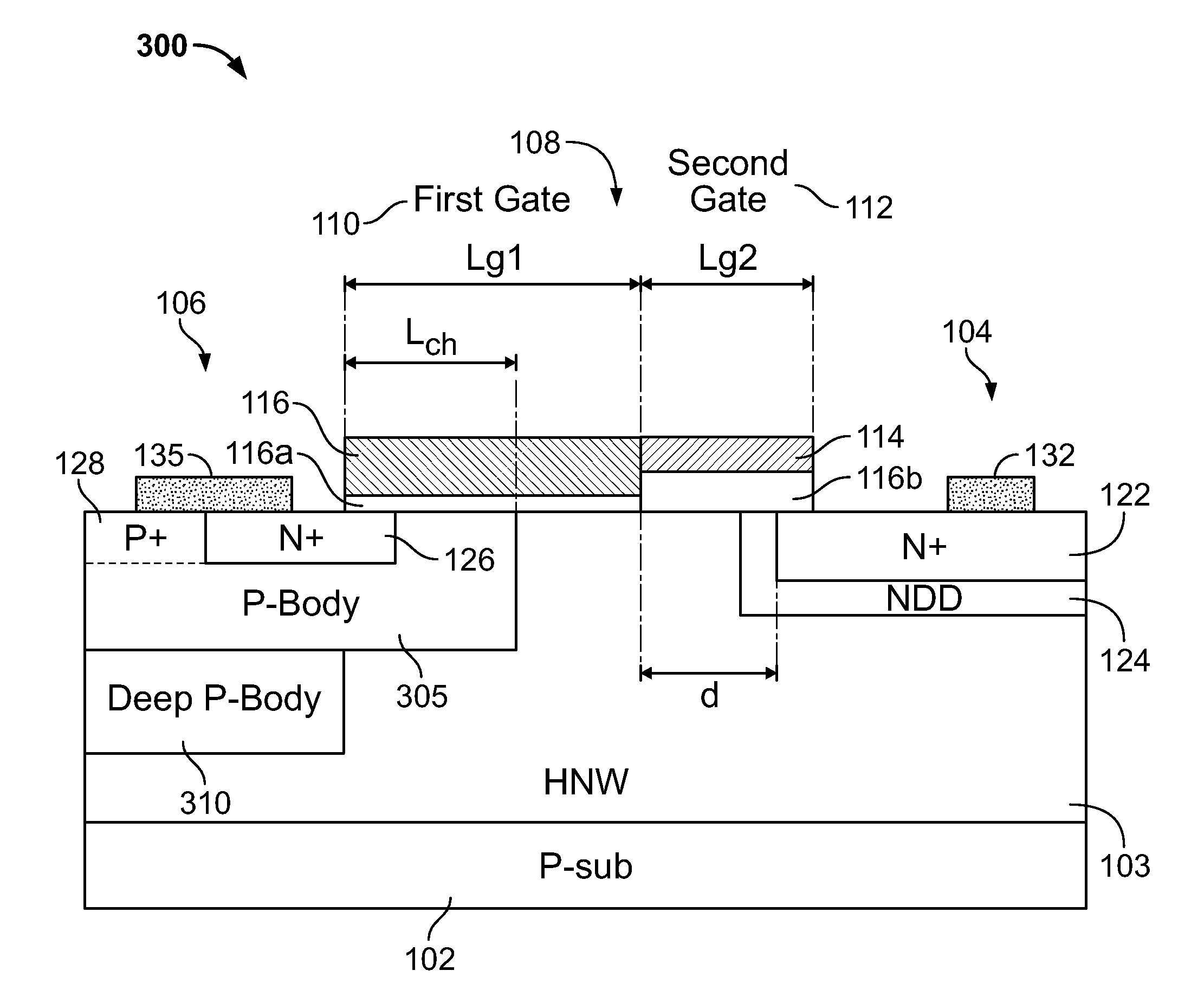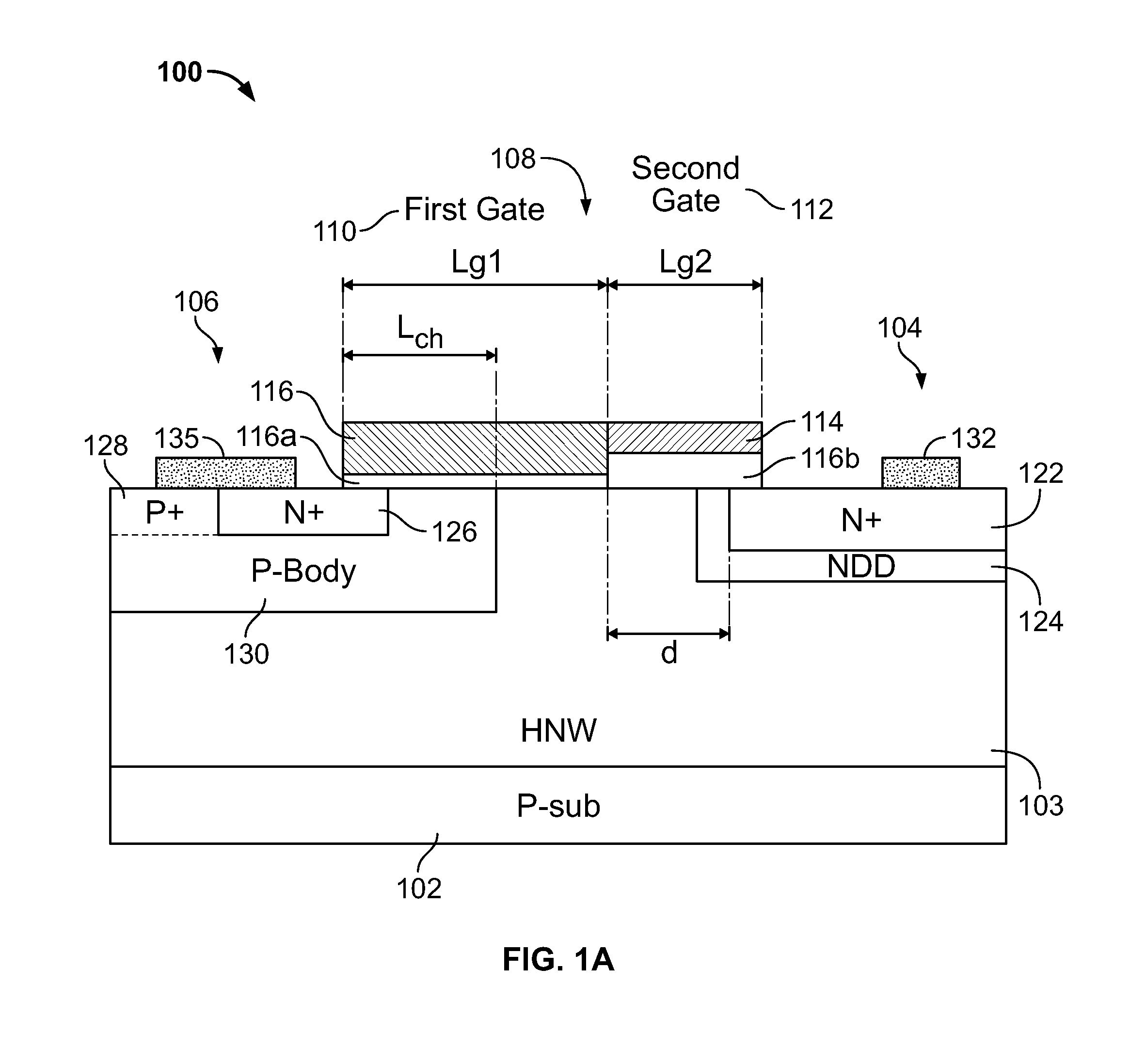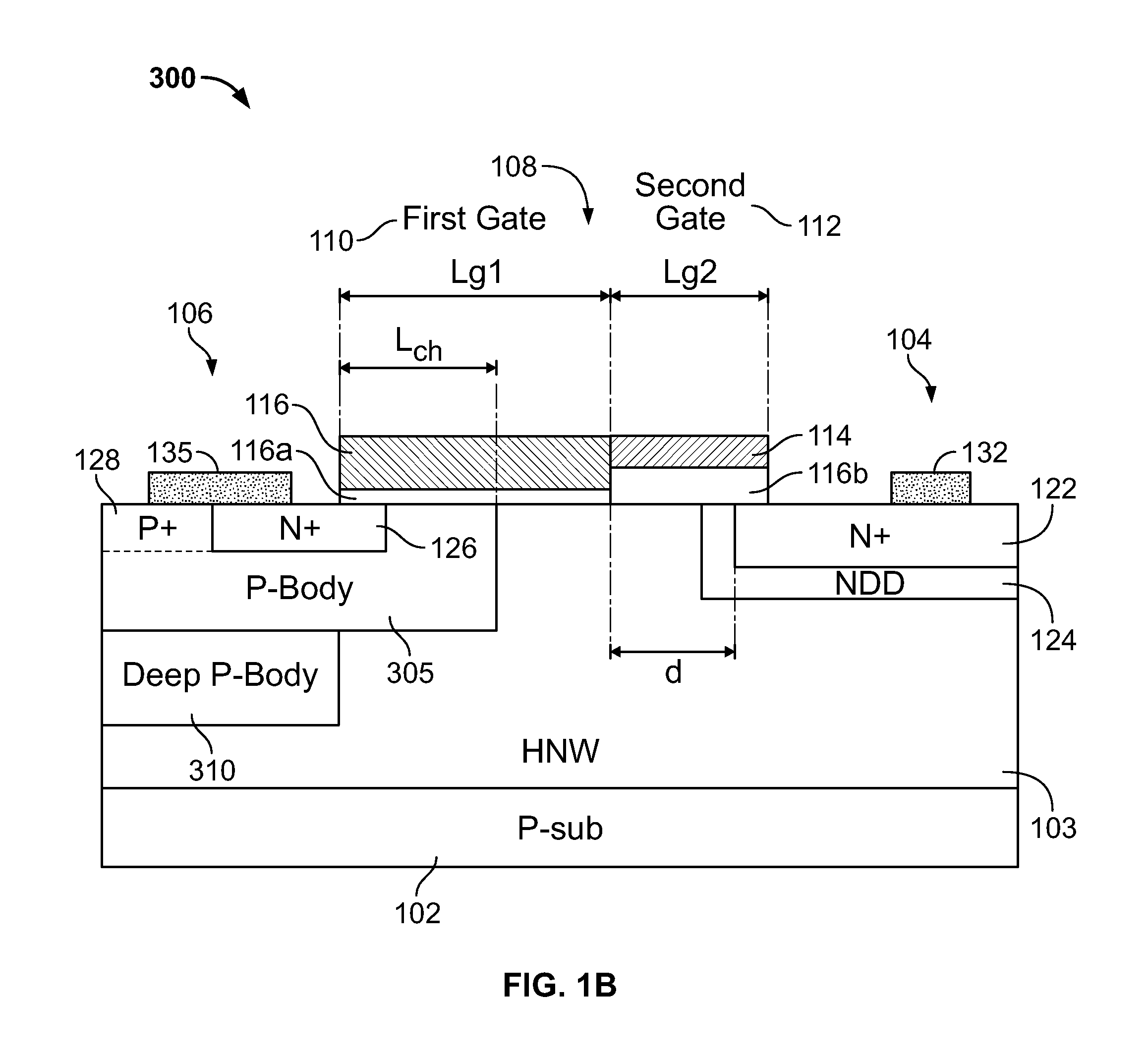LDMOS Device with P-Body for Reduced Capacitance
a technology of ldmos and p-body, which is applied in the direction of semiconductor devices, basic electric elements, electrical apparatus, etc., to achieve the effect of reducing the capacitance, reducing the lumped capacitance of the transistor, and reducing the capacitance of the ldmos transistor
- Summary
- Abstract
- Description
- Claims
- Application Information
AI Technical Summary
Benefits of technology
Problems solved by technology
Method used
Image
Examples
Embodiment Construction
Capacitive losses degrade the efficiency of a transistor. One contribution to capacitance of the transistor is capacitance between the drain and source. Without being limited to any particular theory, capacitance between the drain and source of a transistor is a function of the gradient of the voltage potential between the drain and source. By providing the transistor with a doping profile that spreads the voltage potential gradient between the drain and source, i.e., by lowering the gradient by spreading the voltage potential difference across a larger volume, it is possible to have a transistor that exhibits lower capacitive losses.
Another contribution to the capacitance of the transistor is capacitance between the gate and drain. Without being limited to any particular theory, capacitance between the gate and drain is a function of the gradient of the voltage potential between the gate electrode and drain. The capacitive losses can also be reduced by having a dual gate including ...
PUM
 Login to View More
Login to View More Abstract
Description
Claims
Application Information
 Login to View More
Login to View More - R&D
- Intellectual Property
- Life Sciences
- Materials
- Tech Scout
- Unparalleled Data Quality
- Higher Quality Content
- 60% Fewer Hallucinations
Browse by: Latest US Patents, China's latest patents, Technical Efficacy Thesaurus, Application Domain, Technology Topic, Popular Technical Reports.
© 2025 PatSnap. All rights reserved.Legal|Privacy policy|Modern Slavery Act Transparency Statement|Sitemap|About US| Contact US: help@patsnap.com



